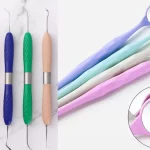Your gums are important supporting structures of your teeth that encircle them and provide anchorage. They also contribute to your oral and facial aesthetics due to their scalloping shape that holds the teeth in place.
The Dentist in Streamwood, Illinois, and their team offer a comprehensive approach towards identifying periodontal disease and effective treatment methods to improve your overall health and well-being.
Understanding periodontal disease
Periodontal disease, popularly known as gum disease, refers to the infection and inflammation of the supporting structures surrounding the tooth. It initially begins as a mild inflammation of the gums, which may progress involving the underlying jawbone.
Periodontal disease can be manifested into two distinctive stages, namely:
- Gingivitis: Involves swelling and reddening of the gum tissue, which is usually reversible if treated on time.
- Periodontitis: Involves pulling away the gums from the teeth, followed by bone deterioration and tooth mobility.
What causes periodontal disease?
Increased bacterial infiltration is the most common etiological factor that can lead to the formation of plaque that adheres to the tooth surfaces. Plaque, if left untreated, can harden to form calculus, leading to the secretion of harmful toxins and acids. These toxins demineralize the tooth structure and erode the supporting tissues.
Risk factors:
- Family history
- Poor oral hygiene
- Puberty, pregnancy, and menopause due to hormonal changes
- Smoking
- Stress
- Certain medical conditions like diabetes and heart disease
- Medications such as immunosuppressants and those that reduce saliva production
- Certain autoimmune diseases like lupus
What are the clinical symptoms of periodontal disease?
Periodontal disease may manifest with the following warning signs and symptoms:
- Red, swollen gums
- Tender, painful gums
- Persistent bad breath (halitosis)
- Bleeding gums
- Pain when chewing
- Poor bite due to malocclusion
- Receding gums
- Increased tooth sensitivity
- Loose teeth
How is periodontal disease treated?
Your dentist will recommend any one of the following treatment options depending on the severity and stage of the disease.
Treatment options include:
- Non-surgical options: For mild to moderate cases
- Professional dental cleaning
- Supragingival cleaning
- Subgingival scaling
- Root planing
- Medications
- Antibiotic gels and mouth rinse
- Enzyme suppressants
- Pocket irrigation
- Surgical options: For moderate to severe cases
- Pocket elimination surgery
- Reattaching the lost gingival tissue to its original position
- Tissue regeneration
- To rehabilitate and revitalize damaged tissue structure through PRP (platelet-rich plasma) therapy
- Gum grafting
- Using gingival tissue grafts from other areas of the oral cavity
- Bone grafting
- Using bone grafts to enhance the jawbone thickness and volume
- Dental implants
- Replacing missing teeth
Remember, it is essential to know the warning signs of periodontal disease to seek timely dental care to prevent further deterioration. Since periodontal disease at an early stage is easily reversible.


 How to Choose the Best Dental Products for Your Needs?
How to Choose the Best Dental Products for Your Needs?  Common Entry Points for Pests in Homes
Common Entry Points for Pests in Homes  Floral Arrangements: Pairing Flower Vases with Artificial Flowers
Floral Arrangements: Pairing Flower Vases with Artificial Flowers  Efficiency Hacks with Material Handling Equipment: Power Up Your Workshop
Efficiency Hacks with Material Handling Equipment: Power Up Your Workshop  Unlock Your Business Potential with the Leading Digital Marketing Agency in Bristol
Unlock Your Business Potential with the Leading Digital Marketing Agency in Bristol  The Ultimate Guide To Vulcan Cladding: Benefits And Applications
The Ultimate Guide To Vulcan Cladding: Benefits And Applications  Beyond the Diamond: Selecting Alternative Gemstones or Opting for No Stone at All
Beyond the Diamond: Selecting Alternative Gemstones or Opting for No Stone at All  7 Unique Tips to Hire the Best Accountant for Your Company
7 Unique Tips to Hire the Best Accountant for Your Company  Discovering The Development of Dating Apps
Discovering The Development of Dating Apps 